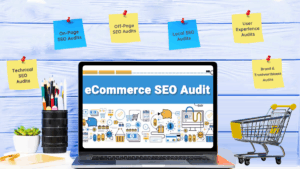If a business does not grow and improve its marketing, it quickly falls behind while others move forward with better strategies. Scaling digital marketing efforts means building processes, using tools, and creating strategies that help you grow your visibility, engagement, and revenue all while maintaining the quality of your messaging and content. It is not just about spending more money or posting more often. It is about doing things in a way that is intentional, data-driven, and scalable. This guide will walk you through every major aspect of scaling your digital marketing efforts successfully, even if you are starting small.
Before beginning to scale, lay a strong foundation.
Before you can even think about growth, you need to assess your current setup. Scaling something ineffective only leads to wasted effort. You want to expand what is already working and fix what is not before investing more time, tools, or money into it.
Recognize your audience’s needs and true identity.
When you understand your audience inside and out, everything becomes easier your content, your messaging, your targeting. Review your buyer personas. Are they still accurate? Do they reflect real people and real pain points? What platforms do your customers use? What language do they respond to? These questions help you design a marketing system that can scale successfully without losing touch with your market.
Audit your marketing strategy and digital assets
Your website, social media pages, email campaigns, ad accounts, blog content, and SEO structure need to be aligned before scaling. Evaluate what is working by looking at hard data traffic, engagement, leads, conversions. Tools like Google Analytics, SEMrush, or a professional digital marketing audit can give you valuable insights into where to double down and where to change direction.
Create a Content Strategy That Can Be Scaled Easily
Producing more material isn’t always the solution; sometimes, producing more intelligent content is. A scalable content strategy means producing assets that are versatile, repurposable, and aligned with your customer journey.
Repurpose high-performing content for different platforms
If you already have blog posts, videos, or social posts that have done well, turn them into something new. A blog can become a YouTube video. A podcast can become an article. A quote can become a graphic. This allows you to scale your message across platforms without starting from scratch every time.
Adapt your material to each funnel stage
People do not go from stranger to buyer in one step. Top-of-funnel content should educate and entertain, like blog posts, social reels, or infographics. Middle-of-funnel content can include email sequences, product explainers, or case studies. Product pages, deals, testimonials, and conversions should be the main topics of bottom-of-funnel material. You can explore deeper funnel content ideas for professional niches here.
Automate the Right Things Without Losing the Human Feel
Automation makes scaling possible but only when it is used strategically. The goal is not to remove the human element, but to increase efficiency while preserving brand voice.
Use automation tools for repetitive marketing tasks
From scheduling social media posts to setting up email autoresponders, automation allows you to stay consistent without manual repetition. Platforms like Mailchimp or HubSpot allow for intelligent automation that adjusts based on user behavior. These systems become essential for scaling digital marketing efforts with a small team.
Keep a personal tone in automated messages
Just because it is automated does not mean it should feel robotic. Write in a natural tone. Use personalisation. Use humor or empathy where appropriate. Always leave space to respond manually when someone reaches out. That human interaction is what builds trust.
Scale Paid Advertising Slowly and Strategically
If you are ready to reach more people fast, paid advertising is one of the most effective ways to do it but scaling must be done with structure and data.
Start with small test campaigns to find what works
Run multiple low-budget ads with different messages, images, or audiences. Watch which one performs best. This A/B testing phase prevents costly mistakes and helps you focus on what brings results. Only increase ad spend once you have a proven winner.
Expand your reach with smart audience targeting
Once your base ads are successful, create lookalike audiences or retarget visitors who engaged but did not convert. This makes your campaigns more efficient and your spend more valuable. To keep costs low, explore our affordable digital marketing services for paid ad management support.
Use Data to Guide Every Step of Your Scaling Strategy
Scaling should not be based on intuition. It should be based on facts. As you employ more data, your growth decisions become more intelligent.
Monitor key performance metrics constantly
Metrics like cost per acquisition, customer lifetime value, conversion rate, and bounce rate give you real insights. They let you know what is and is not functioning. Use these numbers to determine where to invest more and what to phase out.
Adapt your marketing using real-time data
Digital platforms change fast and your audience’s behavior does too. Be ready to shift your content, offers, or even platforms based on how your data evolves. HubSpot has a powerful guide on how to scale marketing strategies for long-term growth that shows how to make smarter moves using insights.
Build a Flexible Team That Supports Your Scaling Goals
To scale, you don’t have to assemble a big team. What you need is a smart team that knows how to work efficiently, and external support when necessary.
Delegate or outsource specialized tasks
Instead of hiring for every skill, outsource tasks like ad design, SEO content writing, or video editing. This keeps your team focused on high-level strategy. Offshore digital marketing services offer affordable support that lets you grow without taking on long-term costs.
Upskill your current team for long-term results
Instead of hiring new people, consider investing in training. Your company grows more quickly when your staff gets better. Bringing in a digital marketing coach can also help your team move with direction and purpose.
Conclusion
Scaling digital marketing efforts is not about doing more. It is about doing better. With the right systems, tools, team, and mindset, your business can grow without breaking. Start by fixing the foundation, then focus on content that can be repurposed, automate where it saves time, run strategic ads, and trust the data to lead you. This approach will keep your message clear, your results growing, and your team focused.
Frequently Asked Questions
What does it really mean to scale digital marketing efforts?
It means growing your marketing reach using efficient, repeatable systems without increasing workload.
Can small businesses scale digital marketing with a low budget?
Yes, with the right strategies and tools, small businesses can scale efficiently.
How do I know if I am ready to scale?
If your current campaigns are working and generating consistent results, you are ready to scale.
What platform should I start scaling on?
Start with the platform where you already have the best performance or audience engagement.
Is automation essential for scaling?
Yes, automation helps maintain consistency and saves time as your workload increases.
Do I need to hire a big team to scale?
No, you can scale using freelancers, offshore support, and a well-trained core team.
Will scaling affect content quality?
Not if you use clear brand guidelines and review systems to maintain consistency.







